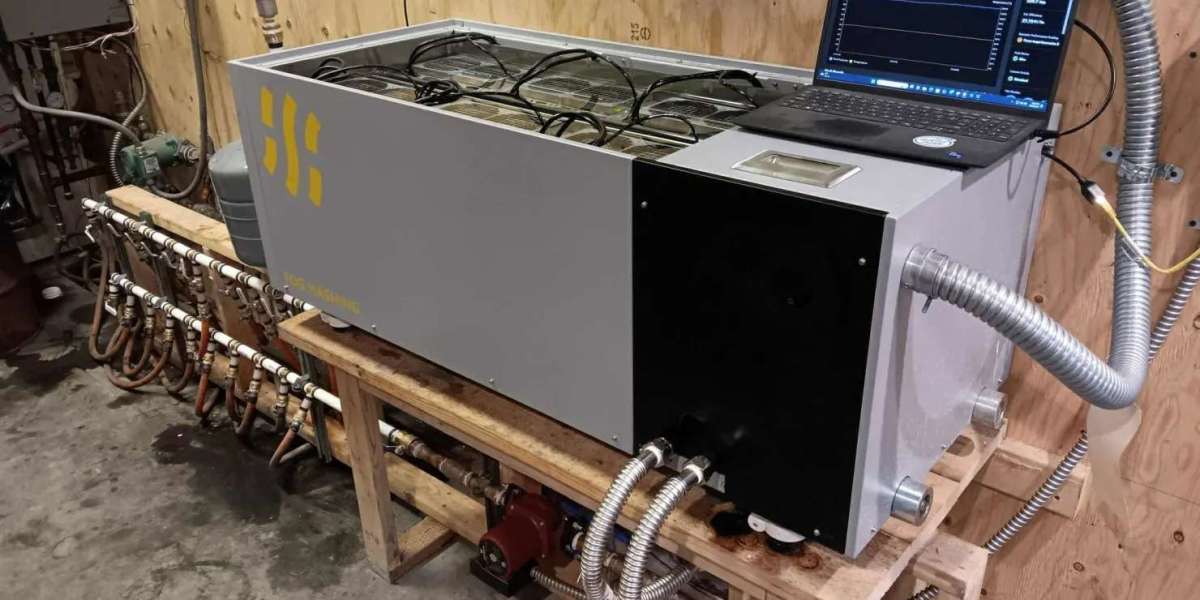Bitcoin Heaters: How Crypto Mining Is Warming Homes and Sparking a New Energy Debate
As winter tightens its grip across the United States, a surprising source of heat is finding its way into homes, shops, and even industrial workspaces: Bitcoin mining. What was once viewed purely as a digital, energy-hungry process is now being repurposed by entrepreneurs and hobbyists who see value in the massive amounts of heat generated by mining hardware. Their goal is simple — turn wasted heat into useful warmth.
This emerging trend, often referred to as Bitcoin heating or crypto-powered heating, is still in its early stages. But it’s attracting attention from innovators, skeptics, and energy experts who are evaluating whether it could play a meaningful role in reducing heating costs and boosting energy efficiency.
advertisement
Why Bitcoin Mining Produces So Much Heat
Bitcoin mining involves running specialized computers around the clock to verify transactions and secure the blockchain. These machines consume significant electricity, and nearly all of that energy is released as heat.
Analysts at digital assets brokerage K33 estimate that the global Bitcoin mining industry produces around 100 terawatt-hours of heat each year — an amount equivalent to the heating needs of an entire country like Finland. Most of this heat is simply expelled into the air, contributing nothing to the places where the mining occurs.
This massive reservoir of untapped thermal energy has led entrepreneurs to ask a natural question: Why waste it?
Heating Homes With Mining Rigs
Some homeowners have already begun experimenting with Bitcoin-powered heating. Products like HeatTrio — a $900 device that functions as both a space heater and a mining rig — represent early attempts at consumer-friendly crypto heaters.
Jill Ford, CEO of Bitford Digital, observes firsthand how miners are using this idea creatively. Some have placed mining rigs in attics and connected them to home ventilation systems, redirecting the heat throughout the house. As she puts it, using the heat from mining is “a clever use of what would otherwise be wasted energy,” and in some cases, it can even offset heating costs.
While using a mining heater won’t necessarily make heating cheaper everywhere — electricity prices and mining difficulty vary widely — it does offer one unique advantage: you get warmth and a chance to mine Bitcoin at the same time. Even a single older mining unit can participate in mining pools, helping users earn small but steady payouts.
Scaling the Concept Beyond the Living Room
Not everyone believes that Bitcoin heaters belong in the average household. Experts warn that while the concept works in theory, it becomes most efficient in large environments, especially those already dealing with substantial heating demands.
Andrew Sobko, founder of Argentum AI, argues that compute-generated heat is far more promising when integrated directly into buildings, industrial parks, or even greenhouses. Instead of transporting heat — which is impractical — miners can simply move the computing power closer to where warmth is needed.
Some partners Sobko works with are already channeling mining heat into central heating systems or agricultural settings. In these cases, mining becomes a dual-purpose tool: it performs digital computation while supplying usable energy to nearby structures.
Skeptics Warn of Practical Limitations
Despite the enthusiasm, skepticism remains strong. Derek Mohr of the University of Rochester argues that Bitcoin mining has evolved far beyond what a typical household can meaningfully contribute. The days when home computers could successfully mine Bitcoin are long gone.
To Mohr, many Bitcoin heaters are essentially space heaters that happen to run mining software. They still rely on the homeowner’s electricity, and the odds of earning enough Bitcoin to offset costs are low. In his view, the concept risks giving individuals false expectations about easy profits.
Efficiency concerns also persist. A heater whose primary output is heat — and only incidentally mines Bitcoin — may not always compete with traditional heating systems in terms of cost or practicality.
Where Optimists See Opportunity
Yet even critics acknowledge the idea’s underlying logic: crypto mining generates large amounts of heat, and that heat could be captured for productive use.
Nikki Morris of the TCU Ralph Lowe Energy Institute sees potential for mining-based heating systems to integrate into broader energy strategies. As mining creates a digital asset, it opens a new revenue stream that traditional heaters simply don’t offer. She believes future applications might include heating water systems, pools, residential complexes, or mixed-use buildings that combine renewable energy with on-site mining.
This raises important questions around efficiency, energy sources, regulation, and environmental impact — all areas that researchers and tech developers are now examining.
Real-World Experiments in an Idaho Town
One of the more compelling real-world prototypes is happening in Challis, Idaho. Local entrepreneur Cade Peterson, founder of Softwarm, is helping businesses repurpose Bitcoin mining heat to get through harsh winters.
A car and RV wash in the town, for example, swapped out its traditional heaters for mining rigs. The result? The rigs not only warm the washing bays but also generate more money in mined Bitcoin than what it costs to operate them. Another business — an industrial concrete company — uses mining heat to warm a 2,500-gallon water tank, saving around $1,000 per month in heating expenses.
Peterson himself has heated his home for more than two years using mining equipment. He believes that one day consumers will buy home appliances like water heaters that come with built-in data ports to run crypto mining for heat.
Conclusion: A Glimpse Into a Hybrid Energy Future
Bitcoin heaters are more than a quirky trend — they represent a new way of thinking about digital energy systems. While significant challenges remain, from efficiency limitations to regulatory uncertainties, the core idea is powerful: combine computation with practical heat production to reduce waste and unlock new forms of value.
Whether Bitcoin heating becomes a mainstream solution or remains a niche experiment, it highlights the growing intersection between digital infrastructure and everyday energy needs. As homes, buildings, and smart devices become more interconnected, the line between physical and digital energy systems will continue to blur.
In that future, the warm air blowing through a home’s vents may not come from a furnace — it may come from a machine solving cryptographic puzzles, earning digital currency, and turning waste into warmth.
Sources
CNBC: Americans are heating their homes with bitcoin this winter
https://www.cnbc.com/2025/11/16/bitcoin-crypto-mining-home-heating-energy-bills.html
Thank you !








